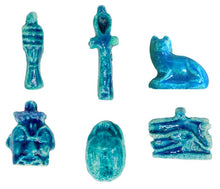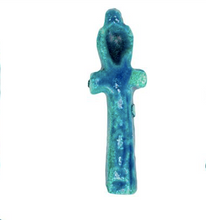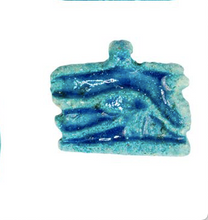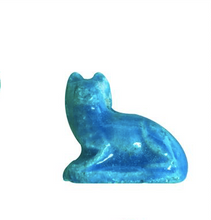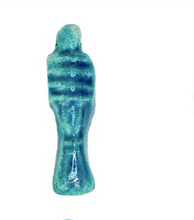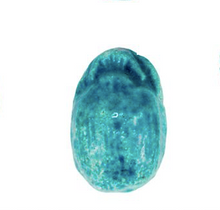Adding product to your cart
Let this cool amulet bring a little charm to your day. Whether you're admiring it as a piece of artwork, or stringing it on a chain to make a one-of-a-kind jewelry statement, each piece is lovingly crafted to reproduce an ancient artifact.
In ancient times, it was commont wear a bevy of amulets in day-to-day life. Each one represented something personal to its wearer and was believed to help bring them good fortune throughout their day.
Each charm is crafted with a handy hole in it so you can easily put on a strand and wear as jewelry. Each is quite small. Sizes, coloration, and detailing may vary as a result of the handmade aspect. Each piece is handmade in Luxor, Egypt, just a few miles from the Valley of the Kings, itself.
-
ANKH -- The ancient Egyptian symbol for "life" or "soul," the ankh is one of the most famous amulets of the ancient culture. The ankh was venerated by the people, who often wore it as a protective amulet as it represented divine, eternal existence.
-
UDJAT EYE -- According to the Walters Museum, "The Udjat-eye (also called Horus-eye) was one of the most popular amulets in Ancient Egypt. The eye symbolizes legitimate kingship, it secures the life of the sun-god, and also of other deities, as well as human beings...As an amulet the Udjat-eye should secure life in this world and in the afterlife, protect health, and promote healing. The standardized form of the amulet combines the human eye with the cheek marking of a falcon and the tear marking of a cheetah...the...eye is connected with the sun."
-
BASTET -- Lady of the East, Goddess of the Rising Sun, and the Sacred and All Seeing Eye, Bastet's silver eye was the moon, itself. The daughter of the sun god, Ra, Bastet was a deity of the home, women, children, and joy. She was a protector goddess, who traveled with her father across the sky during the day and turned into a cat at night to defend him from his great enemy, the serpent Apep. Bastet was associated with the life-preserving power of the sun, with the protection of women, and with felicity, watching over all and shielding them with her loving, radiant protection.
-
DJED PILLAR -- "When worn as an amulet, the symbol helped to invoke the regenerative powers of Osiris. The djed-pillar also served as a common hieroglyphic symbol, representing the ancient Egyptian word for 'stability,'" writes JHU Archeological Museum. "As one of the most common Egyptian amulets, djed-pillar amulets have a long history, dating back to the late Old Kingdom...Green and blue...are the most commonly attested colors of these amulets, enhancing the regenerative powers of the amulets through their connection with the fertility and renewal provided by the Nile and its vegetation."
-
SCARAB -- The symbol of rebirth, transformation, and self-creation, the scarab played an important role in the ancient Egyptian mythos, even serving as an avatar of the greatest gods of the pantheon: Horus and Ra. The scarab was believed to push the sun across the sky every day, giving life and warmth to the world, and was one of the most popular amulets and charms in the ancient culture.
-
BES -- One of the most popular Ancient Egyptian deities, Bes was a protector of children, and was even believed to drive away snakes. According to the Rosicrucian Egyptian Museum, "Bes was...the deity of music, merriment, and childbirth. As such, Bes was thought to be a protector of children, and depictions of him were frequently seen in the bedrooms of ancient Egyptian households...to drive away any evil spirits that attempted to infiltrate the house. Additionally, Bes was...a protector of both couples and pregnant women, and was commonly worshipped by ancient Egyptian newlyweds...Many ancient Egyptian cups or vessels were fashioned in the form of Bes’s head. It was believed that the liquid contained within these cups would acquire the healing properties of Bes, and as such, were often used for medicinal practices. Many residents of the modern Balearic island of Ibiza, which is part of Spain, claim that their island owes its name to the deity...Ibiza, or the 'Island of Bes.'"
Approximately .75"-2".
Use left/right arrows to navigate the slideshow or swipe left/right if using a mobile device








